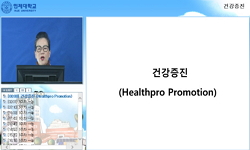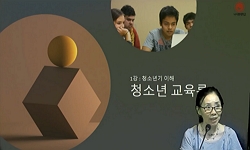Purpose: The purpose of this study was to identify the Clusters of health promoting schools in middle and high schools for the Korean Youth Risk Behaviors Web-based Survey. Methods: The tool of health promoting school was developed based on a framewor...
http://chineseinput.net/에서 pinyin(병음)방식으로 중국어를 변환할 수 있습니다.
변환된 중국어를 복사하여 사용하시면 됩니다.
- 中文 을 입력하시려면 zhongwen을 입력하시고 space를누르시면됩니다.
- 北京 을 입력하시려면 beijing을 입력하시고 space를 누르시면 됩니다.


WHO 건강증진학교 개념에 근거한 전국 중․고등학교의 건강증진학교 운영유형 = Clusters of Health-Promoting Schools in Middle and High Schools Based on the WHO Guidelines
한글로보기https://www.riss.kr/link?id=A104624663
- 저자
- 발행기관
- 학술지명
- 권호사항
-
발행연도
2013
-
작성언어
English
-
주제어
Adolescent ; Schools ; Health promotion ; Health behavior ; Cluster analysis ; 청소년 ; 학교 ; 건강증진 ; 건강행위
-
등재정보
KCI등재,SCOPUS
-
자료형태
학술저널
- 발행기관 URL
-
수록면
282-291(10쪽)
-
KCI 피인용횟수
5
- DOI식별코드
- 제공처
-
0
상세조회 -
0
다운로드
부가정보
다국어 초록 (Multilingual Abstract)
Purpose: The purpose of this study was to identify the Clusters of health promoting schools in middle and high schools for the Korean Youth Risk Behaviors Web-based Survey. Methods: The tool of health promoting school was developed based on a framework for action for health promoting schools in World Health Organization and Schools Health Index for middle and high schools in the United States by 2 professionals and 2 health teachers and revised as a result of the preliminary study. Data were collected with a questionnaire from teachers who attended the conference run by Korean Centers for Communicable Disease Control and Prevention in 2009. The data of 363 schools were analyzed using descriptive analysis, t-test, and ANOVA. Results: As a result of comparing the scores of health promoting schools, three Clusters were identified. The Clusters differed significantly in presence of health teacher, location, and type of schools(p<.05). Conclusion: These results are a good reference in developing tailored strategies for health promoting schools, which will help improve health-promoting schools.
참고문헌 (Reference)
1 이은영, "학교특성에 따른 건강증진학교 평가" 한국보건교육건강증진학회 26 (26): 85-96, 2009
2 이명선, "학교의 안전교육 관련 특성이 청소년의 사고발생 예측에 미치는 영향" 한국보건교육건강증진학회 21 (21): 147-165, 2004
3 이은영, "초등학교와 중·고등학교 건강증진학교 수행 현황과 관련 요인: WHO 건강증진학교 지표를 중심으로" 한국보건교육건강증진학회 29 (29): 109-120, 2012
4 김영숙, "초․중․고등학교의 보건교육 실시현황 및 정착방안에 관한 조사연구" 교육연구소 17 (17): 353-374, 2011
5 손애리, "WHO 건강증진학교 평가개념을 적용한 사정 및 평가 - 양평군 초ㆍ중ㆍ고등학교별 차이 분석 -" 한국학교·지역보건교육학회 9 (9): 1-15, 2008
6 Hyman, I. A., "The other side of school violence: Educator policies and practices that may contribute to student misbehavior" 36 (36): 7-27, 1998
7 McGue, M., "The association of early adolescent problem behavior and adult psychopathology: A multivariate behavioral genetic perspectives" 36 (36): 591-602, 2006
8 World Health Organization, "The Ottawa charter for health promotion"
9 Centers for Disease Control and Prevention, "School Health Index: A self-assessment and planning guide. middle school/ high school version" Centers for Disease Control and Prevention
10 Korea Center for Disease Control and Prevention, "Results of health risk behaviors among Korea adolescents"
1 이은영, "학교특성에 따른 건강증진학교 평가" 한국보건교육건강증진학회 26 (26): 85-96, 2009
2 이명선, "학교의 안전교육 관련 특성이 청소년의 사고발생 예측에 미치는 영향" 한국보건교육건강증진학회 21 (21): 147-165, 2004
3 이은영, "초등학교와 중·고등학교 건강증진학교 수행 현황과 관련 요인: WHO 건강증진학교 지표를 중심으로" 한국보건교육건강증진학회 29 (29): 109-120, 2012
4 김영숙, "초․중․고등학교의 보건교육 실시현황 및 정착방안에 관한 조사연구" 교육연구소 17 (17): 353-374, 2011
5 손애리, "WHO 건강증진학교 평가개념을 적용한 사정 및 평가 - 양평군 초ㆍ중ㆍ고등학교별 차이 분석 -" 한국학교·지역보건교육학회 9 (9): 1-15, 2008
6 Hyman, I. A., "The other side of school violence: Educator policies and practices that may contribute to student misbehavior" 36 (36): 7-27, 1998
7 McGue, M., "The association of early adolescent problem behavior and adult psychopathology: A multivariate behavioral genetic perspectives" 36 (36): 591-602, 2006
8 World Health Organization, "The Ottawa charter for health promotion"
9 Centers for Disease Control and Prevention, "School Health Index: A self-assessment and planning guide. middle school/ high school version" Centers for Disease Control and Prevention
10 Korea Center for Disease Control and Prevention, "Results of health risk behaviors among Korea adolescents"
11 Park, Y. S., "Psychological, behavioral, and relational characteristics of school violence: Comparative analysis of victims, bullies, non-participants of aggression" 7 (7): 63-89, 2001
12 Rowe, F., "Promoting school connectedness through whole school approaches" 107 (107): 524-542, 2007
13 Ministry of Education, Science and Technology, "Operation plan of project for models of health promoting schools"
14 Zhang, X., "Health-promoting school development in Zhejiang Province, China" 23 (23): 220-230, 2008
15 World Health Organization, "Health promoting schools: A framework for action"
16 Moon, A., "Health promoting schools and healthy schools awards" 9 (9): 25-28, 2002
17 Coggans, N., "Health promoting schools - an investigation into the wider context of health education in schools" University of Strathclyde, Hobsons Publishing 1995
18 Nutbeam, D., "Health literacy as a public health goal: A challenge for contemporary health education and communication strategies into the 21st century" 15 (15): 259-267, 2000
19 Lee, A., "Evaluating healthpromoting schools in Hong Kong: Development of a framework" 20 (20): 177-186, 2005
20 Lee, C. Y., "Development and performance analysis of elementary school health promotion policy guideline" 14 (14): 457-467, 2003
21 Rogers, E., "Developing the 'health-promoting school'-a national survey of healthy school awards" 112 (112): 37-40, 1998
22 Xu, L., "Creating health-promoting schools in rural China: A project started from deworming" 15 (15): 197-206, 2000
23 Xia, S., "Creating health-promoting schools in China with a focus on nutrition" 19 (19): 409-418, 2004
24 Lavin, A. T., "Creating an agenda for school-based health promotion: A review of 25 selected reports" 62 (62): 212-228, 1992
25 Statistics Korea, "Causes of death"
26 Lee, A., "Can the concept of health promoting schools help to improve students' health knowledge and practices to combat the challenge of communicable disease: Case study in Hong Kong?" 8 : 42-, 2008
27 Leger, L. St., "Australian teachers' understandings of the health promoting school concept and the implications for the development of school health" 13 (13): 223-235, 1998
28 Lee, A., "Achieving good standards in health promoting schools: Preliminary analysis one year after the implementation of the Hong Kong healthy schools award scheme" 121 (121): 752-760, 2007
29 Kim, Y. I., "A study of the index development and measurement for school health promoting behaviors" 11 (11): 189-201, 1998
30 Kim, M., "A research on the organizational and improvement method of health education at middle and high school" Changwon National University 2009
동일학술지(권/호) 다른 논문
-
- 한국지역사회간호학회
- 김영임
- 2013
- KCI등재,SCOPUS
-
미술요법이 노인의 인지, 우울 및 삶의 질에 미치는 효과
- 한국지역사회간호학회
- 최연희
- 2013
- KCI등재,SCOPUS
-
남성과 여성 사무직 근로자의 신체활동에 미치는 영향요인 비교
- 한국지역사회간호학회
- 채덕희
- 2013
- KCI등재,SCOPUS
-
- 한국지역사회간호학회
- 박영숙
- 2013
- KCI등재,SCOPUS
분석정보
인용정보 인용지수 설명보기
학술지 이력
| 연월일 | 이력구분 | 이력상세 | 등재구분 |
|---|---|---|---|
| 2023 | 평가예정 | 해외DB학술지평가 신청대상 (해외등재 학술지 평가) | |
| 2020-01-01 | 평가 | 등재학술지 유지 (해외등재 학술지 평가) |  |
| 2017-09-01 | 평가 | SCOPUS 등재 (기타) |  |
| 2016-03-02 | 학회명변경 | 한글명 : 지역사회간호학회 -> 한국지역사회간호학회영문명 : The Korean Community Nurses Academic Society -> Korean Academy of Community Health Nursing |  |
| 2015-01-01 | 평가 | 등재학술지 유지 (등재유지) |  |
| 2011-01-01 | 평가 | 등재학술지 유지 (등재유지) |  |
| 2008-01-01 | 평가 | 등재학술지 선정 (등재후보2차) |  |
| 2007-01-01 | 평가 | 등재후보 1차 PASS (등재후보1차) |  |
| 2005-01-01 | 평가 | 등재후보학술지 선정 (신규평가) |  |
학술지 인용정보
| 기준연도 | WOS-KCI 통합IF(2년) | KCIF(2년) | KCIF(3년) |
|---|---|---|---|
| 2016 | 1.09 | 1.09 | 1.42 |
| KCIF(4년) | KCIF(5년) | 중심성지수(3년) | 즉시성지수 |
| 1.46 | 1.4 | 1.984 | 0.34 |




 ScienceON
ScienceON DBpia
DBpia






